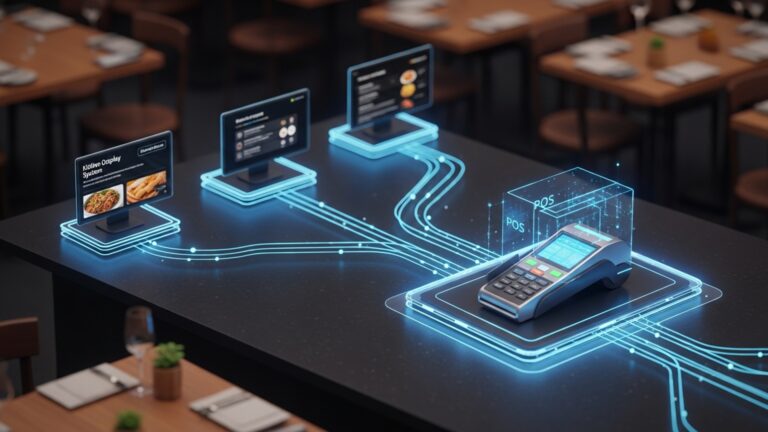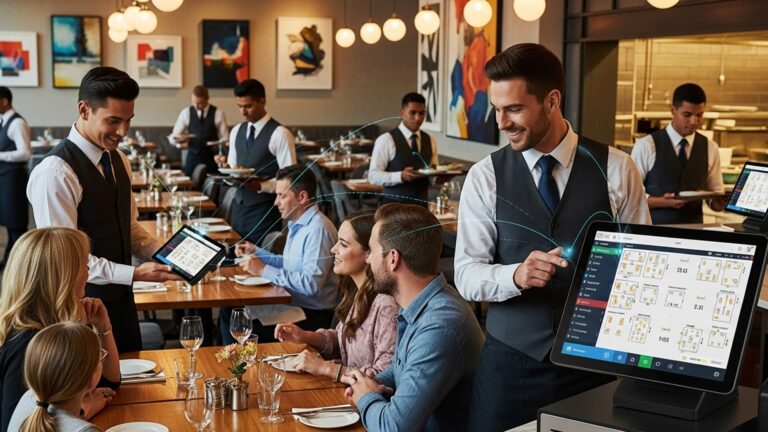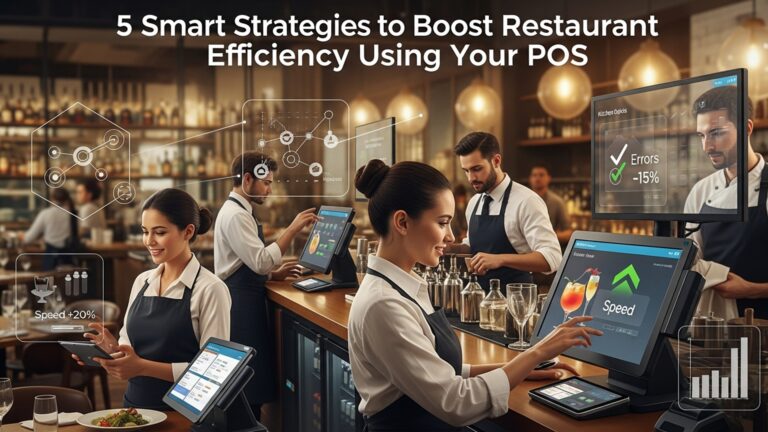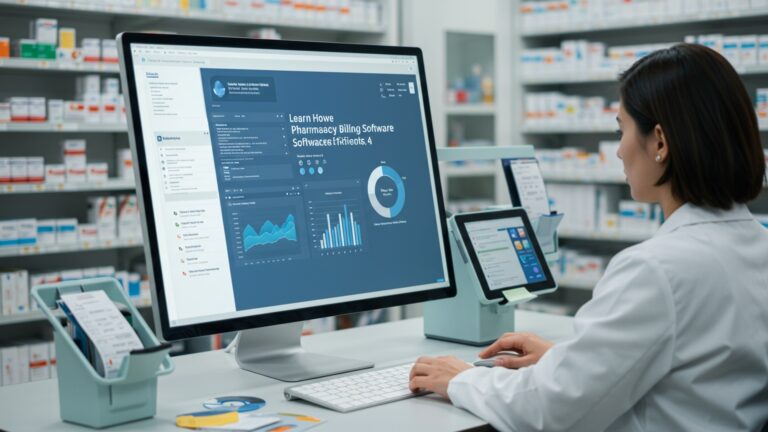Master 8 Key Strategies for Optimizing Your Restaurant POS Usage
In today’s competitive culinary landscape, a modern restaurant POS software transcends basic transaction processing, evolving into the central nervous system for operational excellence. While many establishments invest in robust, cloud-based platforms offering advanced features, they often only scratch the surface of their capabilities, missing critical opportunities for optimization. Imagine preventing revenue leakage by precisely tracking inventory shrinkage in real-time or significantly accelerating table turnover through integrated QR code ordering and seamless kitchen display system (KDS) synchronization. Unlocking the true potential of your restaurant POS software means moving beyond simple order entry to leverage its analytics for informed decision-making, optimize staff deployment based on predictive sales data. enhance guest experiences with personalized loyalty programs, directly impacting profitability and efficiency in a dynamic market.
Unlocking the Full Potential of Your Restaurant POS Software
Many restaurant owners view their Point of Sale (POS) system simply as a tool for processing transactions. While that’s its primary function, modern Restaurant POS software is a powerhouse of features designed to streamline operations, enhance customer experience. boost profitability. Understanding and utilizing its full suite of capabilities is the first step toward true optimization. Beyond merely ringing up orders, your POS can manage tables, track inventory, generate insightful reports. even facilitate customer loyalty programs. Think of it as the central nervous system of your restaurant, connecting front-of-house, back-of-house. even your customers.
Key modules often overlooked include:
- Advanced Inventory Management
- Employee Management
- Customer Relationship Management (CRM)
- Reporting and Analytics
Going beyond basic stock counts to track ingredient usage, supplier management. waste reduction.
Scheduling, time clock integration, performance tracking. payroll preparation.
Building customer profiles, tracking preferences. managing loyalty programs.
Detailed sales breakdowns, peak hour identification, menu item performance. profitability analysis.
By delving deeper into these functionalities, you transition your POS from a simple cash register to a comprehensive business management tool.
Comprehensive Staff Training: The Cornerstone of Efficient Usage
Even the most advanced Restaurant POS software is only as effective as the people operating it. Inadequate staff training is a common bottleneck that leads to errors, slow service. frustrated employees and customers. Comprehensive training ensures every team member, from servers to kitchen staff and managers, is proficient in using the system relevant to their role.
Consider a structured training approach:
- Initial Onboarding
- Ongoing Refresher Sessions
- Advanced Module Training
A thorough introduction for new hires covering basic order entry, payment processing. table management.
Regular short sessions to reinforce knowledge, introduce new features, or address common issues.
Specialized training for managers on inventory, reporting, scheduling. troubleshooting.
For example, a restaurant that implemented a mandatory weekly 30-minute training session saw a 15% reduction in order errors and a 10% increase in average table turn time within two months. This not only improved efficiency but also significantly enhanced the customer experience, as orders were accurate and service was swifter. Investing in training is investing in your business’s operational excellence.
Leveraging Inventory Management Features to Cut Costs
One of the most powerful yet underutilized aspects of modern Restaurant POS software is its integrated inventory management capability. This feature allows restaurants to track ingredients, supplies. menu items in real-time, providing critical insights that can significantly reduce waste and control costs.
Here’s how it works:
- Recipe Management
- Supplier Integration
- Waste Tracking
- Real-time Alerts
Inputting exact ingredient quantities for each menu item. When an item is sold, the POS automatically deducts the corresponding ingredients from stock.
Some advanced systems can integrate with supplier databases, automating reorder points and purchase orders.
Recording spoilage, breakage, or expired items helps identify problem areas and improve forecasting.
Receiving notifications when stock levels for critical ingredients run low, preventing last-minute rushes or menu unavailability.
Consider a real-world scenario: a popular Italian restaurant frequently ran out of fresh basil. By leveraging their POS’s inventory features, they precisely tracked basil usage per dish and set up an alert for when their stock dropped below a two-day supply. This prevented stockouts, ensuring all menu items were consistently available and reducing last-minute emergency purchases from more expensive suppliers, ultimately saving them an estimated $300-$500 per month on just one ingredient.
Optimizing Table Management and Order Flow for Seamless Service
Efficient table management and a streamlined order flow are critical for guest satisfaction and operational speed, especially during peak hours. Modern Restaurant POS software offers sophisticated tools that far surpass traditional pen-and-paper methods.
Key features include:
- Digital Floor Plans
- Order Routing
- Split Check Functionality
- Course Management
Interactive layouts that show table status (occupied, vacant, reserved, dirty) in real-time.
Automatically sending specific order items (e. g. , appetizers, main courses, drinks) to the correct prep stations (kitchen, bar).
Easily dividing bills by item, person, or custom amounts, reducing errors and server time at the end of a meal.
Holding courses until the kitchen is ready, ensuring dishes arrive at the table at the appropriate time.
Let’s compare traditional vs. POS-driven table management:
| Feature | Traditional (Pen & Paper) | POS-Driven |
|---|---|---|
| Table Status | Manual observation, prone to errors | Real-time, interactive digital floor plan |
| Order Accuracy | Handwritten notes, misinterpretations possible | Digital entry, direct kitchen display system (KDS) |
| Split Checks | Tedious manual calculation, often slow | Automated, quick. accurate splitting |
| Server Communication | Verbal, prone to miscommunication | Digital, clear. tracked |
| Reporting | Minimal, time-consuming to compile | Detailed data on table turn times, server performance |
By leveraging these features, a restaurant can significantly reduce wait times, improve order accuracy. enable servers to handle more tables efficiently, leading to higher tips and better customer reviews.
Harnessing Data Analytics and Reporting for Informed Decisions
Your Restaurant POS software is constantly collecting a treasure trove of data. But, this data is only valuable if it’s analyzed and used to make informed business decisions. Modern POS systems offer robust reporting tools that can illuminate sales trends, peak performance times, popular menu items. even employee productivity.
Types of data your POS collects:
- Sales Reports
- Peak Hour Analysis
- Menu Item Performance
- Void/Discount Reports
- Customer Data
Daily, weekly, monthly. yearly sales, broken down by menu item, category, payment type. employee.
Identifies busiest times, helping optimize staffing levels.
Shows which dishes are top sellers, lowest sellers. most profitable.
Highlights potential issues with staff training or theft.
If using CRM features, tracks purchase history and preferences.
Actionable Takeaway: Menu Engineering
By analyzing menu item performance reports, you can apply principles of menu engineering. For instance, if a dish like “Chef’s Special Pasta” has high popularity but low profitability (due to expensive ingredients or high prep time), you might consider slightly increasing its price, finding a more cost-effective ingredient, or pairing it with a high-margin appetizer. Conversely, if a dish is highly profitable but rarely ordered, you might give it more prominence on the menu or run a promotion. This data-driven approach ensures your menu is not just appealing but also contributes optimally to your bottom line.
Integrating with Third-Party Systems for a Unified Ecosystem
The true power of modern Restaurant POS software extends beyond its native features to its ability to seamlessly integrate with other essential business tools. Creating a unified ecosystem of interconnected software eliminates manual data entry, reduces errors. provides a holistic view of your operations.
Common integrations include:
- Online Ordering Platforms
- Loyalty Programs & CRM
- Accounting Software
- Employee Scheduling Software
- Reservation Systems
Integrates with services like Uber Eats, DoorDash, or your proprietary online ordering system, sending orders directly to the POS and kitchen display system (KDS).
Connects with dedicated customer loyalty platforms to track points, manage rewards. personalize marketing efforts.
Automatically syncs sales data, payroll details. inventory costs with platforms like QuickBooks or Xero, simplifying bookkeeping.
Links employee hours and shifts directly to payroll within the POS.
Integrates with platforms like OpenTable, ensuring real-time table availability updates.
Use Case: Seamless Online Order Integration
Imagine a busy Friday night. Without integration, online orders from various platforms would require staff to manually re-enter them into the POS, leading to delays, potential errors. increased stress. With integration, an online order for a “Spicy Tuna Roll” placed via a third-party app instantly appears on the sushi bar’s KDS, is recorded in the POS for sales tracking. deducts the ingredients from inventory. This automation ensures orders are processed faster, accurately. with minimal human intervention, allowing staff to focus on in-house diners.
Implementing Customer Relationship Management (CRM) Features for Loyalty
Beyond transactional efficiency, your Restaurant POS software can be a powerful tool for building lasting customer relationships. Many modern systems come equipped with basic to advanced CRM functionalities that allow you to collect customer data, grasp their preferences. implement targeted marketing and loyalty programs.
CRM features enabled by your POS often include:
- Customer Profiles
- Loyalty Programs
- Preference Tracking
- Targeted Marketing
Storing names, contact details, birth dates. purchase history.
Tracking points, offering rewards. managing gift cards.
Noting allergies, favorite dishes, or special requests.
Using collected data to send personalized promotions or birthday offers.
Anecdote: Remembering a Customer’s Favorite Dish
Sarah, a regular at “The Daily Grind” coffee shop, always orders a large oat milk latte with an extra shot. The owner implemented a simple POS-based loyalty program that captured Sarah’s preference. One day, as Sarah approached the counter, the barista, seeing her profile pop up on the POS screen, greeted her by name and asked, “The usual, Sarah?” This small, personalized gesture significantly enhanced Sarah’s experience, making her feel valued and reinforcing her loyalty to “The Daily Grind” over competitors. This level of personalized service, driven by POS data, is invaluable in today’s competitive restaurant landscape.
Regular Maintenance and Software Updates: Ensuring Smooth Operation
Optimizing your Restaurant POS software isn’t a one-time task; it requires ongoing attention to maintenance and updates. Neglecting these aspects can lead to system slowdowns, security vulnerabilities. missed opportunities for new features that could further enhance your operations.
Key aspects of regular maintenance:
- Software Updates
Regularly installing updates provided by your POS vendor. These often include bug fixes, performance enhancements. new functionalities.
# Example command for checking updates on some Linux-based POS systems sudo apt update && sudo apt upgrade
(Note: Most commercial POS systems have a GUI for updates, this is an illustrative technical example.)
Periodically inspecting all POS hardware (terminals, printers, card readers) for wear and tear. Cleaning screens and ensuring cables are secure.
Ensuring regular, automated backups of your POS data to prevent loss in case of system failure.
Reviewing user permissions and strong password policies to protect sensitive customer and sales data.
A restaurant owner once recounted how a simple overlooked software update led to their POS system crashing during a busy Saturday night service. The update contained a critical bug fix for a memory leak. Had they applied it, they could have avoided hours of manual order taking, frustrated customers. lost revenue. Proactive maintenance and staying current with updates are crucial preventative measures that safeguard your operations and protect your investment in the Restaurant POS software.
Conclusion
Your restaurant’s POS is far more than just a transaction terminal; it’s the operational heartbeat of your business. Mastering these eight strategies isn’t a one-off task. an ongoing commitment to efficiency and guest delight. I’ve personally seen countless establishments, from bustling city bistros to quaint suburban cafes, unlock remarkable gains by treating their POS as a strategic asset. My actionable tip? Schedule a ‘POS power-hour’ monthly with your team to review settings, explore untapped features. troubleshoot. This proactive engagement ensures you’re leveraging functionalities like real-time inventory adjustments for a seamless lunch rush, or integrating new contactless payment options, aligning with current hospitality trends. Embrace this continuous optimization journey. In an era where predictive analytics and integrated online ordering are rapidly evolving, your expertise in harnessing every facet of your POS system directly translates into superior customer experiences and a robust bottom line. Make your POS work for you, not just with you, propelling your restaurant towards sustained success.
More Articles
10 Essential POS Software Features Every Restaurant Owner Needs to Know
Learn 8 Common Mistakes to Avoid When Using Restaurant POS
5 Ways Restaurant POS Software Boosts Your Business Efficiency and Profits
Your Guide to 6 Key Integrations for Restaurant POS Success
FAQs
Why is proper staff training so crucial for POS optimization?
Well-trained staff means faster order taking, fewer mistakes. quicker table turns. It ensures everyone uses the system efficiently, unlocking its full potential and improving the overall customer experience.
Should I bother with all those regular POS software updates?
Absolutely! Updates often bring new features, security enhancements. bug fixes. Ignoring them can leave you with outdated functionality and potential vulnerabilities, causing you to miss out on valuable improvements.
How can my POS help me manage inventory better?
A good POS integrates with inventory, tracking ingredients as they’re sold. This helps you monitor stock levels in real-time, reduce waste, prevent running out of popular items. make smarter purchasing decisions for your kitchen.
What’s the big deal about using customer data with my POS?
Leveraging customer data allows you to personalize service, create targeted loyalty programs. grasp diner preferences. This leads to repeat business and a more engaging, tailored experience for your customers.
My POS generates a ton of reports – which ones should I really focus on?
Don’t get overwhelmed! Key reports include sales by item, server performance, peak hours. payment types. Analyzing these gives you actionable insights into what’s selling, who’s performing well. when to staff up.
Any tips for making menu changes easier with the POS?
Keep your digital menu clean and organized. Use clear categories, simple descriptions. high-quality photos if your system supports them. Regularly review and update pricing and item availability to avoid confusion and ensure accuracy for both staff and customers.
How can I speed up payment processing at my restaurant?
Ensure your POS supports various payment methods, including mobile and contactless options. Look into integrated payment processing to avoid manual entry errors and significantly speed up transaction times, making checkout smoother for everyone.





